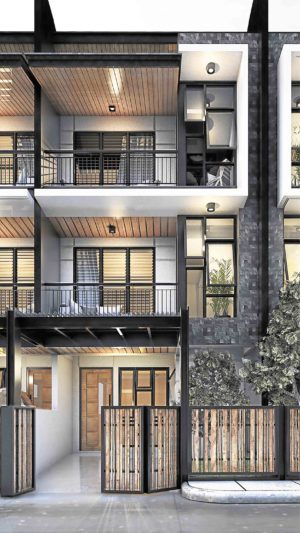Attempts to attain sustainable property development have grown in recent years, on the back of technological advancements and demands from rising environmental awareness.
Thus, property developers are considering climate change in every stage of a building’s life cycle starting from the design, construction, up to the operations and maintenance phase.
For instance, the green building design process as opposed to conventional approach embraces the concept of integration where all stakeholders and expert consultants work together even during the pre-design phase to define sustainability impact early on.
Here are probably the two essential sustainable design categories that could help every developer be more environmentally responsible builders.
Sustainable planning
The rapid suburbanization of available land has a tremendous impact on the agricultural sector and wildlife. As many fields and forests are being converted into subdivisions and commercial areas, habitats can become fractured, bodies of water may lose their ability to support urban sprawls, and farm fields may no longer provide enough harvest to meet the needs of the society.
Far-flung towns that are difficult to reach due to lack of infrastructure are still underdeveloped and many property developers don’t see any potential growth in these areas.
Communities must find ways to make hard-to-reach areas more desirable and demand more environmental policies on land around cities. With sustainable land planning practices, developers can achieve economic rewards with lesser social and environmental downsides.
Here is a list of sustainable land use planning practices:
- Encourage environment-based land use plans and walkable community zoning ordinances;
- Develop sustainable masterplanned communities with urban planners, architects, engineers, and academic institutions;
- Preserve more open spaces and encourage community-based livelihood; and
- Revitalize urban in-fill and brownfield redevelopment, mostly in industrial zones.
Sustainable structures
Project requirements due to market competition have increased in size and sophistication resulting in greater environmental concern. The rising number of buildings and township developments disturb not only the ecological balance but also the social and economic circumstances of a municipality.
To overcome these challenges, the core of project inception should consider these sustainable building design guides:
- Efficient floor plans. Improving the total square meter of poorly planned building footprint and floor areas will reduce the costs of framing and finishing materials. Extra areas can be reallocated to usable spaces giving more flexibility to functional and aesthetic solutions.
- Natural lighting and indoor air quality. Many condominium and house designs have taken little consideration of our tropical climate conditions. They have misplaced openings or skylights that prevent natural lighting or decent ventilation derived from our year long prevailing winds. Designs that understand topology and take advantage of good orientation invite wellness by bringing sunshine and breezes into the habitat. At night, smart lighting systems could be integrated in the rooms to help with utility costs.
- Shading and water management. Our climate has two main seasons: the wet and dry seasons. Decent shading devices and ample insulation in walls and roofs not only help cool down the interiors during summer but also decrease energy costs from mechanical ventilation or air conditioning systems. Harvesting rainwater and installing proper treatments could provide free water for flushing, cleaning, irrigation, and to a degree, safer and much softer drinking water compared to the chemically-treated municipal water in Manila.
- Material Selection. Some building materials destroy the environment quickly. The energy used for production of certain materials generate carbon emissions. As a developer, adapting to 100 percent sustainable building materials is rarely realistic but to use environmentally improved products whenever practical is being responsible.
- Waste Reduction. As they say: reuse, reduce, and recycle. There are clear benefits from reducing job-site waste and recycling, which include savings on material costs, extended life of landfills, reduction in embodied energy costs of construction, and improved environmental image.
Sustainable development promotes economic well-being, environmental protection and overall quality of life for people without compromising the ability of future generations to meet their eventual needs.
Incorporating these simple sustainable measures with new architectural design concepts makes winning combinations for development projects.
The author manages his own architectural firm and construction company in the Philippines, focusing on planning and design specialties for entrepreneurs, property owners, and business enterprises. He has worked with diversified LEED and Greenmark mixed development projects in Singapore with worldwide industry consultants such as Skidmore Owings & Merrill of New York, Arup, Meinhardt, Cicada, Wilson Associates, and Davis Langdon & Seah.


